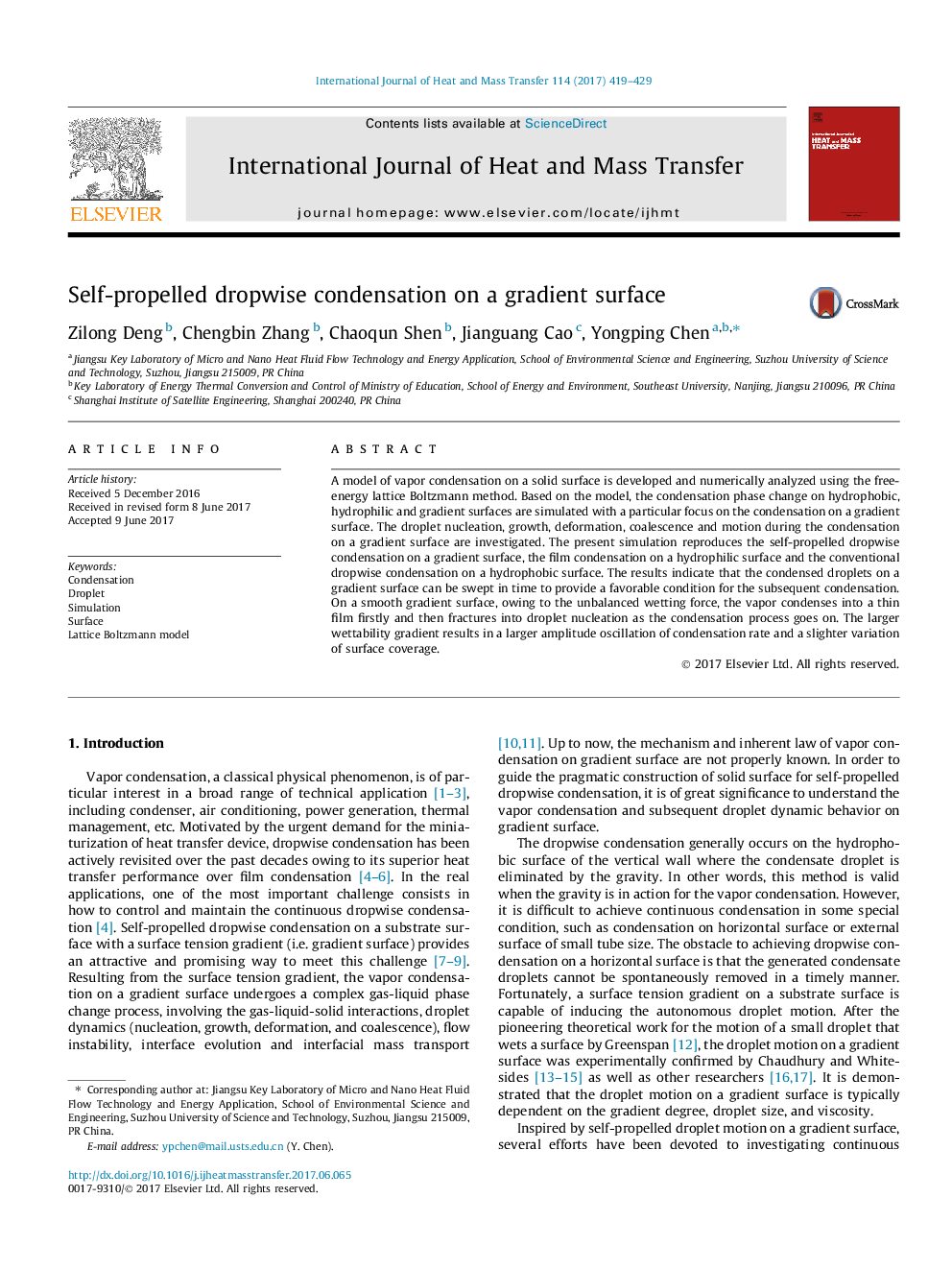| Article ID | Journal | Published Year | Pages | File Type |
|---|---|---|---|---|
| 4993880 | International Journal of Heat and Mass Transfer | 2017 | 11 Pages |
Abstract
A model of vapor condensation on a solid surface is developed and numerically analyzed using the free-energy lattice Boltzmann method. Based on the model, the condensation phase change on hydrophobic, hydrophilic and gradient surfaces are simulated with a particular focus on the condensation on a gradient surface. The droplet nucleation, growth, deformation, coalescence and motion during the condensation on a gradient surface are investigated. The present simulation reproduces the self-propelled dropwise condensation on a gradient surface, the film condensation on a hydrophilic surface and the conventional dropwise condensation on a hydrophobic surface. The results indicate that the condensed droplets on a gradient surface can be swept in time to provide a favorable condition for the subsequent condensation. On a smooth gradient surface, owing to the unbalanced wetting force, the vapor condenses into a thin film firstly and then fractures into droplet nucleation as the condensation process goes on. The larger wettability gradient results in a larger amplitude oscillation of condensation rate and a slighter variation of surface coverage.
Related Topics
Physical Sciences and Engineering
Chemical Engineering
Fluid Flow and Transfer Processes
Authors
Zilong Deng, Chengbin Zhang, Chaoqun Shen, Jianguang Cao, Yongping Chen,
